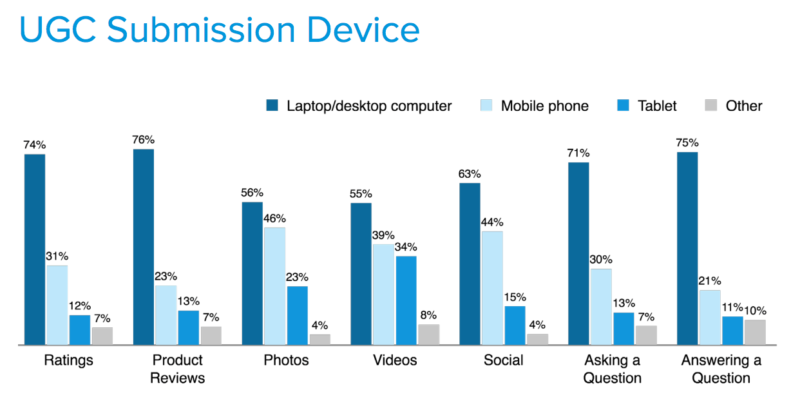After ratings and reviews, search engines had the greatest influence on buying behavior.
It’s well-established that ratings and reviews are widely consulted and have a significant impact on consumer purchase decisions. A new study from TurnTo affirms this and provides some additional color and nuance for the discussion.
Called “Hearing the Voice of the Consumer” and conducted by Ipsos, the study involved 1,070 US consumers who had bought something online in the past 12 months. User-generated content (UGC) is defined here to include ratings, reviews, photos, videos, social posts and Q&A participation. The most common forms were reviews and ratings, however, with 71 percent and 69 percent of survey respondents saying they’ve submitted those types of UGC.
Online ratings and reviews are a form of word of mouth, which is the most trusted source consumers consult before buying. Indeed, 90 percent of survey respondents said UGC had at least some influence over their online purchases. Roughly 53 percent rated it “extremely influential” or “very influential,” a higher percentage than for any other category. After UGC, search engines had the greatest influence over purchases.

UGC helps increase consumer confidence to buy online. “Increases my purchasing confidence” was cited as the greatest influence of UGC. Close behind was “improves customer feedback.” But survey respondents also said that UGC helped create “more authentic shopping experiences” and was more interesting than content generated by brands themselves.

In one of the more interesting findings, consumers said they were inclined to spend more on a product with UGC vs. a comparable lower-priced product without. This directly argues that consumers will buy more and at higher price levels if products are wrapped in UGC.

A subset of consumers generate most of the UGC, though it is consumed by the larger online audience. In this case, 32 percent of survey participants said they had not contributed any UGC — because there was “no incentive to contribute.”
Yelp in particular has a very public policy against incentivized reviews. Others prohibit explicitly paying for reviews but often allow those that are incentivized through contests or sweepstakes.
The second most commonly cited reason for not submitting UGC was that it was “too time-consuming.” Survey respondents likely had reviews in mind in that response.

A separate survey from GetFiveStars found that since 2014, “the willingness of consumers to leave reviews has dramatically increased … across all age groups.”
Another surprise from the TurnTo survey was the degree to which UGC was still largely coming from the PC, which showed a substantial lead compared with mobile devices. The gap between PCs and mobile devices was less pronounced for photos and social.

Each of these responses, and many others that I don’t address here, are discussed in more detail and broken out by gender and age in the report.
TurnTo sells a platform that helps retailers and brands generate UGC. Despite this, I believe the primary conclusion of the study — that ratings, reviews and other UGC are more influential than advertising — is valid. That argues for greater investment in the customer experience.




